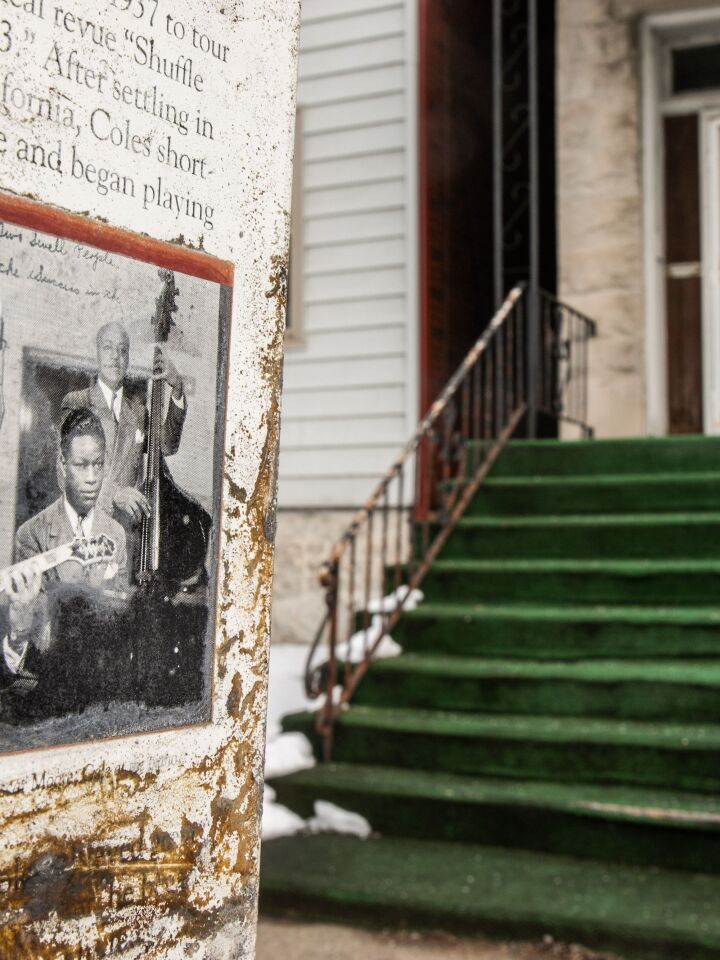Over the last century, some of the most prominent Black figures in the country, if not the world, have resided in Chicago.
The Obamas still own a home in Kenwood. Muhammad Ali had a mansion there. Astronaut Mae Jemison grew up in Morgan Park.
There are many others, most of them gone. But the places they called home often remain.
Here’s a look at some of them.
Before Harold Washington, there was Richard Newhouse. Newhouse ran for mayor in 1975, the first African American to do so. At the time, he was serving in the Illinois Senate. Elected to the General Assembly in 1966, he remained through 1991.
His former house at 5421 S. Ridgewood Ct. was purchased by Van and Beth Bistrow in 1986. It was in “pretty bad shape,” said Van Bistrow, and the family didn’t move in until 1988 after extensive repairs.
“It must not have been lived in for a while,” said Van Bistrow. “It had a tin ceiling in the dining room that had fallen down because of a bathtub leak upstairs, and the floors were a mess.”
Van Bistrow did some of the renovations himself, spending two years replacing plaster in two rooms.
Newhouse was hardly the only local Black figure to break barriers.
Lorraine Hansberry, the first Black woman to write a play performed on Broadway, was a Chicago native. That play, “A Raisin in the Sun,” was inspired by her life at 6140 S. Rhodes Ave.
The three-story home, bought by her father in 1937, has since been divided into three apartments; the current owner, Kevin Pitts, has been renovating as tenants move in and out. Like many other former homes of famous Chicagoans, it’s an official Chicago landmark, as designated by the city; that list can be found online.
Pitts knew the history when he bought the property, but it wasn’t Hansberry’s writing that most interested him.
“What I know about her is her activism in the community,” said Pitts. Hansberry advocated for equal rights in the newspaper Freedom, published by musician/actor/activist Paul Robeson.
Hansberry was among many writers calling the city home during Chicago’s Black Renaissance, an early 20th Century literary movement to highlight the plight of African Americans in a racist society.
That included Richard Wright. From 1929 to 1932, Wright and his family lived in a second-floor apartment at 4831 S. Vincennes Ave.
Here, Wright began writing “Lawd Today!,” though that novel wasn’t published until 1963, three years after his death. His other works include “Native Son,” the first best-selling book by an African American writer, and “Black Boy.”
Carrying on the renaissance was Illinois’ poet laureate, Gwendolyn Brooks. Brooks called Chicago home for 80 years. She and her husband bought the gray and white cottage at 7428 S. Evans Ave. on Sept. 14, 1953. The Pulitzer Prize winner lived there until 1994.
Other legendary Black figures brought music to the city.
The trumpeter Louis Armstrong lived and played in Chicago during the 1920s. It’s also where he met his second wife, Lil Hardin; the two moved to 421 E. 44th St. in Bronzeville in 1925.
Also living in Bronzeville was Nat “King” Cole. The singer and jazz pianist was born in Alabama, but his family moved to Chicago and Cole grew up at 4023 S. Vincennes Ave. The three-story building is still there, with an iron fence, a small porch — and a marker detailing the life of the man who once lived inside.
While Cole’s house isn’t open to public viewing, the home of blues musician Muddy Waters will be.
When McKinley Morganfield, known professionally as Muddy Waters, came to Chicago in 1943, he bought the home at 4339 S. Lake Park Ave. Though closed today, his great-granddaughter Chandra Cooper has been restoring the house, now known as the MOJO Museum.
“We’re just connecting the dots and making sure that this man of Black excellence is being honored and his legacy is being preserved,” said Cooper.
Cooper is part of the Coalition of Black House Museums, which wants to preserve the homes of iconic Black figures.
“We are doing the work that it takes to make sure (Black) historical homes … are there for generations to come, for our children, for our youth, for people in the community,” she said.
Also in the coalition is Naomi Davis, owner of the Emmett and Mamie Till-Mobley House Museum, Garden & Theatre. Davis said preserving buildings — even ones carrying painful stories, like that of Emmett Till, who was lynched in Mississippi at age 14 — lifts up the Black community.
“We are indestructible,” said Davis. “Everyone in the world has taken a turn at us, but we are still here, strong. ... We can and must show the young people of today the inheritance of strength that is theirs for the taking.”
Other historic residences:
• Emmett and Mamie Till-Mobley House Museum, Garden & Theatre, 6427 S. St. Lawrence Ave.
• Ida B. Wells-Barnett House, former residence of the civil rights activist and journalist Ida B. Wells, 3624 S. Martin Luther King Dr.
• Former home of boxer and activist Muhammad Ali, 4944 S. Woodlawn Ave.
• Former home of Chicago Defender founder and publisher Robert S. Abbott, 4742 S. Martin Luther King Dr.
• Site of the apartment building where Martin Luther King, Jr. and his family lived in 1966, 1550 S. Hamlin Ave. That building is gone; the Dr. King Legacy Apartments are there now.
• Childhood home of former first lady Michelle Obama, 7436 S. Euclid Ave.
Cheyanne M. Daniels is a staff reporter at the Chicago Sun-Times via Report for America, a not-for-profit journalism program that aims to bolster the paper’s coverage of communities on the South and West sides.













